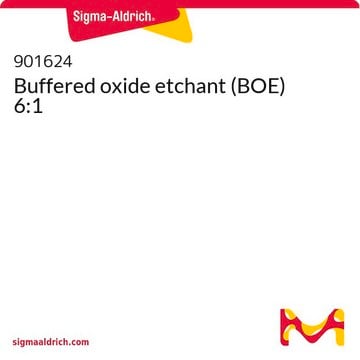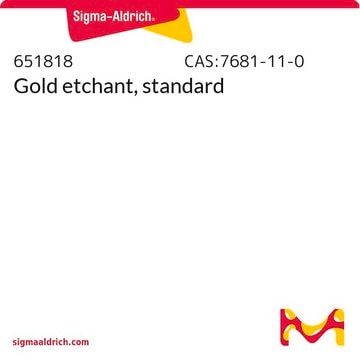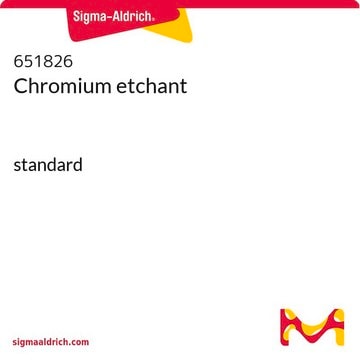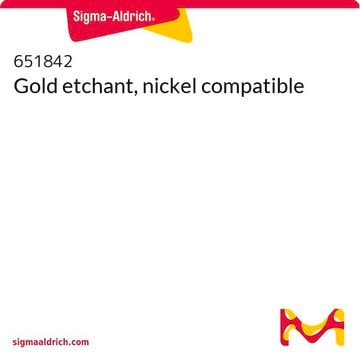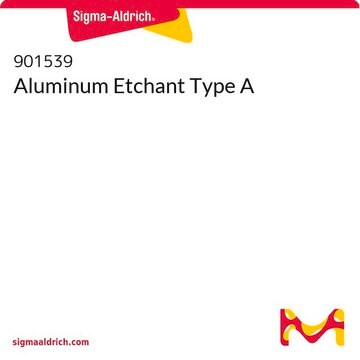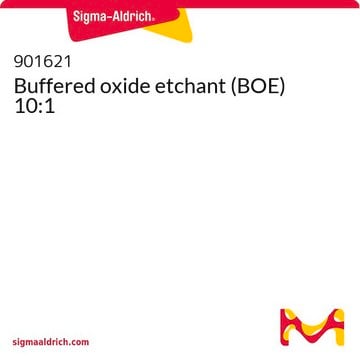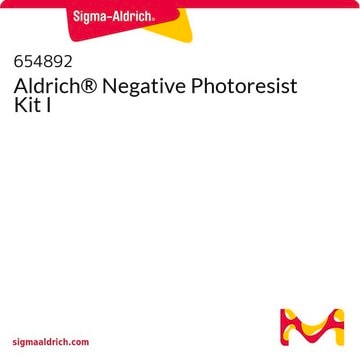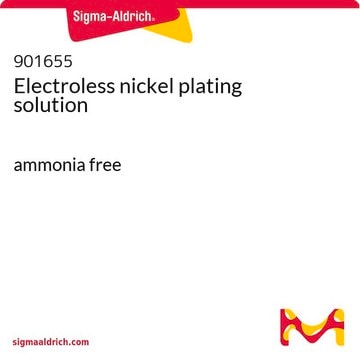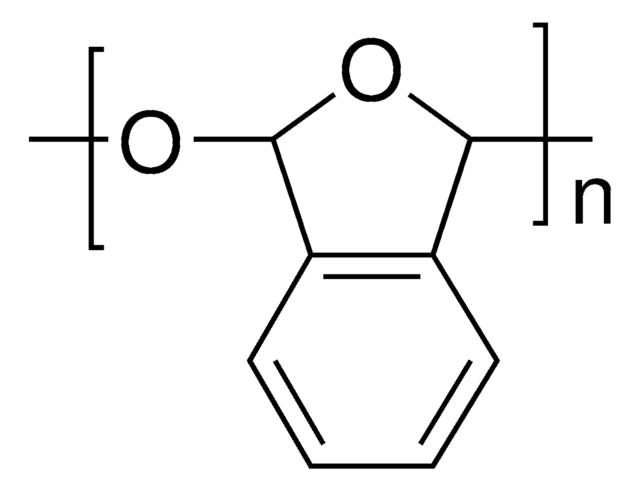667528
Copper etchant
Synonym(s):
Copper etching solution
Sign Into View Organizational & Contract Pricing
All Photos(1)
About This Item
Recommended Products
vapor density
1.3 (vs air)
Related Categories
Application
CE-200 solution can be used to etch out the copper residue or foil from the chemical vapor deposited (CVD) graphene or carbonated films by immersing the substrate with the nanomaterial into the etchant solution for 30 min.
It is ideal for spray etching of copper. Ferric chloride based Cu etchant with etch rate of 0.5 mil/min @ 40 °C.
Signal Word
Danger
Hazard Statements
Precautionary Statements
Hazard Classifications
Eye Dam. 1 - Met. Corr. 1 - Skin Corr. 1
Storage Class Code
8B - Non-combustible corrosive hazardous materials
WGK
WGK 1
Flash Point(F)
Not applicable
Flash Point(C)
Not applicable
Personal Protective Equipment
dust mask type N95 (US), Eyeshields, Gloves
Certificates of Analysis (COA)
Search for Certificates of Analysis (COA) by entering the products Lot/Batch Number. Lot and Batch Numbers can be found on a product’s label following the words ‘Lot’ or ‘Batch’.
Already Own This Product?
Find documentation for the products that you have recently purchased in the Document Library.
Customers Also Viewed
The effect of copper pre-cleaning on graphene synthesis
Kim SM, et al.
Nanotechnology, 24(36), 365602-365602 (2013)
Copper etching with cupric chloride and regeneration of waste etchant
Cakir O
Journal of Materials Processing Technology, 175(1-3), 63-68 (2006)
Microbial colonisation of transparent glass-like carbon films triggered by a reversible radiation-induced hydrophobic to hydrophilic transition
Jalvo B, et al.
Royal Society of Chemistry Advances, 6(55), 50278-50287 (2016)
Controlled synthesis of nanocrystalline glass-like carbon thin films with tuneable electrical and optical properties
Romero P, et al.
Chemical Engineering Journal, 299(1-3), 8-14 (2016)
Enhanced performance of organic light-emitting diodes by using hybrid anodes composed of graphene and conducting polymer
Shin S, et al.
Current Applied Physics, 13(36), S144-S147 (2013)
Our team of scientists has experience in all areas of research including Life Science, Material Science, Chemical Synthesis, Chromatography, Analytical and many others.
Contact Technical Service